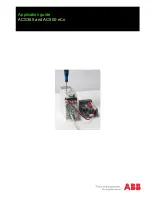
Page 66
FT
DX
9000D O
PERATION
M
ANUAL
SUB (VFO-B)
VRF switch
SUB (VFO-B)
VRF knob
SUB (VFO-B)
VRF will appear on the
bar graph
MAIN (VFO-A)
VRF/µ-T switch
MAIN (VFO-A)
VRF/µ-T knob
VRF will appear on
the bar graph
VRF will appear on the
bar graph
SUB (VFO-B)
RX switch
VRF will appear on
the bar graph
U
SING
THE
VRF
(
V
ARIABLE
RF F
RONT
-
END
F
ILTER
)
The VRF system is a high-performance RF front-end preselector that has lower Q and lower insertion loss than the µ-Tune
circuit. VRF provides outstanding rejection of out-of-band signals, and if low gain in your antenna system causes insertion
loss to be a critical factor, you may wish to use VRF, instead of µ-Tune, on the bands below 14 MHz.
VRF on the Main (VFO-A) Band Frequency
1.
Press the VRF/µ-T switch (#
) momentarily. The
LED inside the switch will become illuminated, and
the VRF system will be engaged, centered on your
current Amateur band.
2.
You may rotate the VRF/µ-T knob (#
) to skew
the position of the VRF system relative to your oper-
ating frequency. Because the VRF system is relatively
broad, although still much narrower than the fixed
bandpass filter), you may not hear much difference in
the background noise or signal quality when you make
minor adjustments. However, if you have receiving
problems associated by a very strong signal, rotation
of the VRF/µ-T knob may help reduce the strength
of the interfering station, allowing improved recep-
tion of the desired signal.
H
After moving the passband of the VRF system manually, you
may re-center it on the current Amateur band by pressing and
holding in the VRF/µ-T switch for two seconds.
H
To switch VRF off, press the VRF/µ-T switch momentarily
again. The LED imbedded in the switch will go out, and the
VRF circuit will be removed from the incoming received sig-
nal path.
Using VRF on the Sub (VFO-B) Band Frequency
1.
Press the Sub (VFO-B) RX switch (#
) to engage
Dual Receive operation.
2.
Press the Sub (VFO-B) band’s VRF switch (#
)
to engage the VRF. The LED imbedded in the switch
will light up, confirming that VRF is now in the signal
path for the Sub (VFO-B) receiver.
H
The settings of the VRF are set and held in memory indepen-
dently for each Amateur band, so any custom settings will be
maintained despite any band changes you perform.
3.
Rotation of the VRF knob (#
) allows adjustment
of the center frequency of the VRF circuit.
H
If you have made adjustments to the VRF circuit’s center fre-
quency, press and hold in the VRF/µ-T button for two sec-
onds to re-center the VRF on the center of the Amateur band
on which you currently are operating.
H
To switch VRF off, press the VRF/µ-T switch momentarily
again. The LED imbedded in the switch will go out, and the
VRF circuit will be removed from the Sub (VFO-B) receiver’s
incoming signal path.
A
DVANCED
I
NTERFERENCE
-S
UPPRESSION
F
EATURES
: RF F
RONT
E
ND
Quick Point
The VRF filter, utilizing high-quality coils and capacitors that provide high Q, yields a passband that is approximately 20%
to 30% the width of a traditional, fixed bandpass filter. As a result, significantly more unwanted signal rejection is provided.
Within each Amateur band, 64 adjustment steps are provided (50 MHz: 8 steps), if you wish to skew the response in a
particular direction so as to enhance interference rejection even more.
MAIN (VFO-A)
Summary of Contents for FT DX 9000D - COMPUTER AIDED TRANSCEIVER
Page 1: ...FTDX9000D Operation Manual...
Page 2: ......
Page 95: ...Page 93 FT DX 9000D OPERATION MANUAL NOTE...
Page 101: ...Page 99 FT DX 9000D OPERATION MANUAL NOTE...
Page 127: ...Page 125 FT DX 9000D OPERATION MANUAL NOTE...
Page 149: ...Page 147 FTDX9000D OPERATION MANUAL NOTE...
Page 152: ...Page 150 FTDX9000D OPERATION MANUAL NOTE...
Page 153: ...Page 151 FTDX9000D OPERATION MANUAL NOTE...
















































